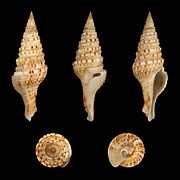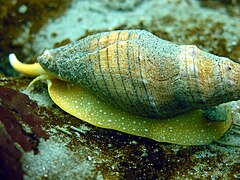
Conidae, with the current common name of "cone snails", is a taxonomic family of predatory sea snails, marine gastropod molluscs in the superfamily Conoidea.

Conoidea is a superfamily of predatory sea snails, marine gastropod mollusks within the suborder Hypsogastropoda. This superfamily is a very large group of marine mollusks, estimated at about 340 recent valid genera and subgenera, and considered by one authority to contain 4,000 named living species.

Pseudomelatomidae is a family of predatory sea snails, marine gastropods included in the superfamily Conoidea and part of the Neogastropoda.

The Drilliidae are a taxonomic family of small predatory sea snails with high-spired shells. They are classified as marine gastropod mollusks in the superfamily Conoidea.

Cochlespirinae was a subfamily of predatory sea snails, marine gastropod mollusks, belonging to the family Turridae, commonly named turrids.

Turrinae is a former subfamily of predatory sea snails, marine gastropod mollusks in the family Turridae the turrids.
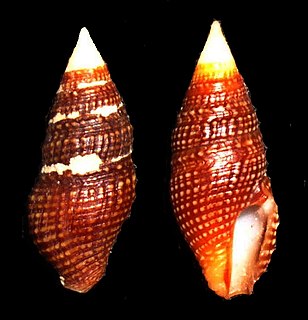
Crassispirinae is a subfamily of small predatory sea snails, marine gastropod mollusks, belonging to the family Turridae, commonly named turrids.
Clathurellinae was a subfamily of small to quite large sea snails, marine gastropod mollusks in the family Conidae.
Mangeliidae is a monophyletic family of small to medium-sized, predatory sea snails, marine gastropod mollusks in the superfamily Conoidea.

Agladrillia is a genus of sea snails, marine gastropod mollusks in the family Drilliidae.
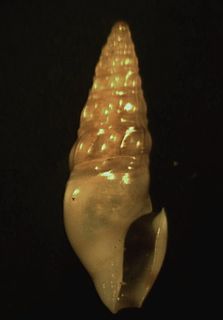
Splendrillia is a genus of sea snails, marine gastropod mollusks in the family Drilliidae.

Syntomodrillia is a genus of sea snails, marine gastropod mollusks in the family Drilliidae.

Lucerapex is a genus of sea snails, marine gastropod mollusks in the family Turridae, the turrids.
Fusiturricula is a genus of sea snails, marine gastropod mollusks in the family Drilliidae.
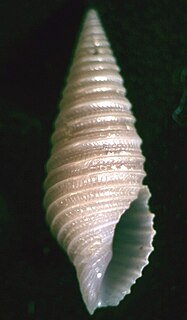
Borsoniidae is a monophyletic family of small to medium-sized sea snails, marine gastropod mollusks in the superfamily Conoidea.

Horaiclavidae is a family of predatory sea snails, marine gastropod mollusks in the superfamily Conoidea.

Cochlespiridae is a taxonomic family of predatory sea snails, marine gastropod mollusks in the superfamily Conoidea.

Raphitomidae is a family of small to medium-sized sea snails, marine gastropod mollusks in the superfamily Conoidea.

Turridae is a taxonomic family name for a number of predatory sea snails, marine gastropod mollusks in the superfamily Conoidea.

Microdrillia is a genus of very small sea snails, marine gastropod mollusks in the family Borsoniidae.





